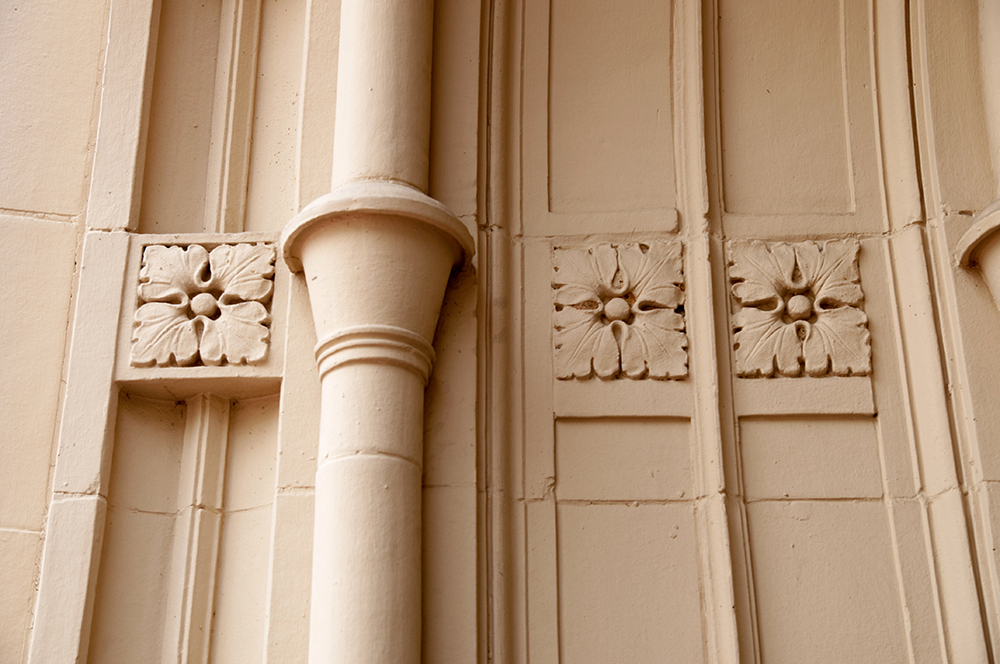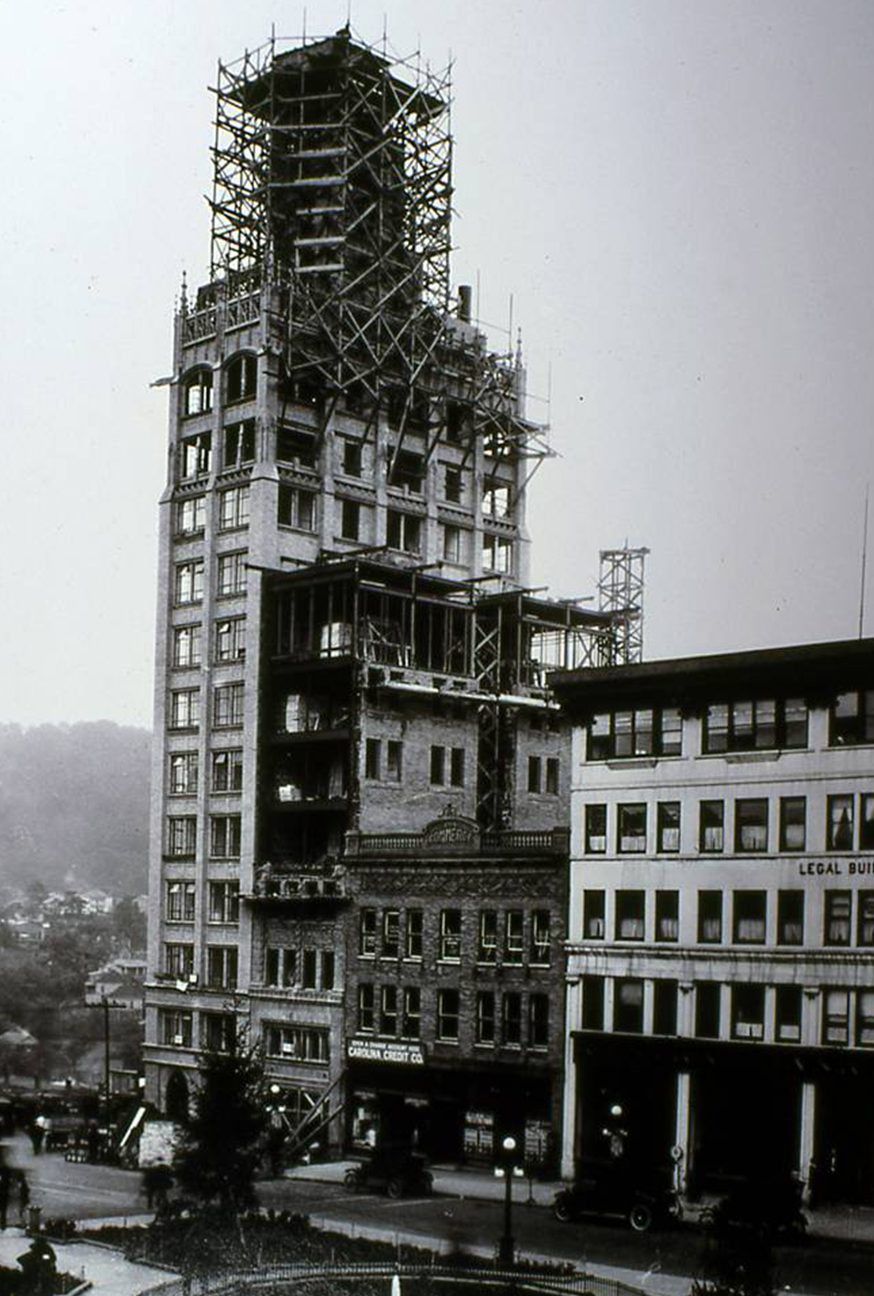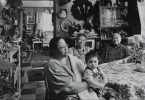History Feature: Asheville’s Odd Couples
Story by John Turk
A color picture postcard popular during the 1930s, ’40s, and ’50s showed the 1920s County Building and City Building standing at the east end of the central square. Its title read, “Asheville’s Odd Couple.”
Douglas Ellington had been engaged to design both. His City Building is a creative mixture of Middle Eastern, Native American and Art Deco details and his use of color can make a sensitive observer’s mouth water. His County Building was to include the same influences and colors, but county commissioners switched gears at the last minute and hired another architectural firm to design a neo-classic structure. Today this odd couple towers above Pack Square. Tour guides call the County Building ‘the box that the City Building came in.’

Westall Building

Jackson Building (Photos by Sarah Jones Decker)
In 1924, real estate tycoon Lynwood B. Jackson commissioned architect Ronald Greene to design an office building that would be unlike any other in Asheville. Greene envisioned a 15-story skyscraper with an explosion of Gothic Revival at the top. At the same time, William Westall, a prominent Asheville builder and businessman, purchased the property directly west of Jackson’s building and commissioned Greene to design an office building for his business as well. To save space, the buildings would ‘share’ an elevator, connecting on the upper floors. They were referred to as, “one large office space under the management of L.B. Jackson.”
Although both were designed by Greene, there are profound differences. The 15-story Gothic Revival Jackson Building is obviously taller. And it is unified by the cream color of its terra cotta. The eight-story Westall Building is a fanciful combination of English Norman and Spanish Romanesque styles. And the Westall is far more colorful, ranging from orange to blue to green.
On the other hand, if you examine the decorative elements of each, there are some surprises to be found. The square terra cotta rosettes (stylized flowers) on both buildings are identical. They were most likely ordered from the same catalogue. The only variant is color.
Walking around Asheville’s downtown and looking up will reveal many more architectural “odd couples.”
John Turk, Professor Emeritus, Youngstown State University, leads city walking and bus tours with history-at-hand.com and Asheville by Foot.







